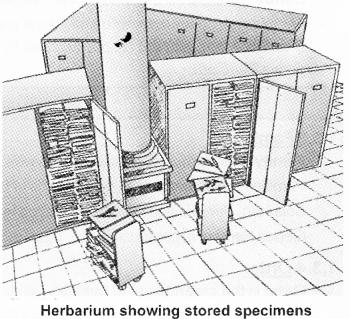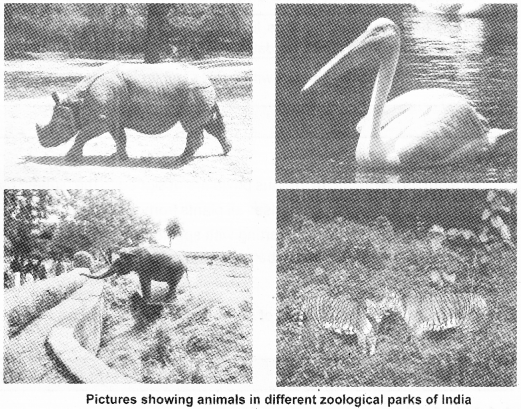Kerala Plus One Zoology Notes Chapter 1 The Living World
WHAT IS ‘LIVING’?
The features of living organisms are
| Growth, reproduction, ability to sense environment etc. |
All living organisms grow, increase the mass and increase the number of individuals are the characteristics of growth.
- In plants, growth by cell division occurs continuously throughout their life span.
- In animals, growth is seen only up to a certain age.
- Unicellular organisms also grow by cell division it can be seen in in-vitro cultures by simply counting the number of cells under the microscope.
| Reproduction, likewise, is a characteristic of living organisms. |
- In multicellular organisms, reproduction refers to the production of progeny possessing features more or less similar to those of parents.
- Fungi multiply and spread due to the millions of asexual spores they produce.
- In lower organisms like yeast and hydra reproduce by budding.
- In Planaria (flatworms) a fragmented organism regenerates the lost part of its body and becomes a new organism.
- The fungi, the filamentous algae, the protonema of mosses etc multiply by fragmentation.
| Another characteristic of life is metabolism. |
All living organisms are made of chemicals. These chemicals are constantly being made and changed into some other biomolecules. There are thousands of metabolic reactions occurring simultaneously inside all living organisms.
Metabolism is a defining feature of all living organisms without exception, isolated metabolic reactions in vitro are not living things but surely living reactions.
| Hence Cellular organisation of the body is the defining feature of life forms |
- All organisms, from the prokaryotes to the most complex eukaryotes can sense and respond to environmental cues.
- Photoperiod affects reproduction in seasonal breeders, both plants and animals.
- All organisms are ‘aware’ of their surroundings.
- Human being is the only organism who is aware of himself, i.e. self-consciousness.
| Consciousness therefore, becomes the defining property of living organisms. |
Living organisms are self-replicating, evolving and self-regulating interactive systems capable of responding to external stimuli. All living organisms are linked to one another by the sharing of the common genetic material, but to varying degrees.
DIVERSITY IN THE LIVING WORLD:
| The number of species comes to the range between 1.7 – 1.8 million. This refers to biodiversity of organisms on earth. |
Nomenclature:
There are millions of plants and animals in the world; their names need to be standardised all overthe world. This process is called nomenclature.
Identification:
Nomenclature or naming is only possible when the organism is described correctly and the name is attached to. This is identification.
For plants, scientific names are based on agreed principles and criteria, which are provided in International Code for Botanical Nomenclature (ICBN). For animals International Code of Zoological Nomenclature (ICZN). Biologists follow universally accepted principles to provide scientific names.
| Each name has two components – the Generic name and the specific epithet. This type of naming with two components is called Binomial nomenclature. This was given by Carolus. |
For example the scientific name of mango is written as Mangifera indica. In this name Mangifera represents the genus while indica, is a particular species, or a specific epithet Other universal rules of nomenclature are as follows:
| 1. Biological names are generally in Latin and written in italics. |
| 2. The first word in a biological name represents the genus while the second is the specific |
| 3. The first word denoting the genus starts with a capital letter while the specific epithet starts with a small letter |
| 4. Name of the author appears after the specific epithet, eg: Mangifera indica Linn. It indicates that this species was first described by Linnaeus |
Classification:
It is the process by which anything is grouped into categories based on some easily observable characters. Hence, based on characteristics, all living organisms can be classified into different taxa. This process of classification is taxonomy.
Hence, characterisation, identification, classification and nomenclature are the processes that are basic to taxonomy. Sytematics include identification, nomenclature and classification. It also takes into account evolutionary Ktogdom relationships between organisms.
The word systematics is derived from the Latin word ‘systems’ which means systematic arrangement of organisms. Linnaeus used Systems Naturae as the title of his publication.
TAXONOMIC CATEGORIES:
It involves hierarchy of steps that represents a rank or category. Since all categories together constitute the taxonomic hierarchy. Each category, referred to as a unit of classification termed as taxon Insects represent a group of organisms sharing common features like three pairs of jointed legs. It means insects are recognisable give the rank. Each rank or taxon represents a unit of classification.
Common categories as kingdom, phylum or division (for plants), class, order, family, genus and species. In the plant and animal kingdoms species is lowest category.This helps in identifying similarities and dissimilarities among the individuals of the same kind of organisms as well as of Other kinds of organisms.

Species:
The group of individual organisms with fundamental similarities are called species. The species distinguish from other closely related species based on the distinct morphological differences.
For example Mangifera indica, Solanum tuberosum (potato) and Panthera leo (lion). All the three names, indica, tuberosum and leo, represent the specific epithets, while the first words Mangifera, Solanum and Panthera are genera.
Genus:
Genus comprises a group of related species which has more common characters For example, potato, tomato and brinjal are three different species but all belong to the genus Solanum. Lion (Panthera leo), leopard (P pardus) and tiger (P. tigris) with several commodes features are all species of the genus Panthera.
Family:
Family, has a group of related genera with number of similarities. Families are characterised on the basis of both vegetative and reproductive features of plant species.
Solanum, Petunia and Datura are placed in the family Solanaceae. Genus Panthera, comprising lion, tiger, leopard is put along with genus, Fells (cats) in the family Felidae
Order:
Order is the assemblage of families which exhibit a few similar characters. The similar characters are less in number as compared to different genera included in a family.
Plant families like Convolvulaceae, Solanaceae are included in the order polymoniales mainly based on the floral characters. The animal order, Carnivora, includes families like Felidae and Cancidae.
Class:
This category includes related orders. For example, order Primata comprising monkey, gorilla and gibbon is placed in class Mammalia The order Carnivora that includes animals like tiger, cat and dog belongs to the Class Mammalia also.
Phylum:
It includes animals like fishes, amphibians, reptiles, birds along with mammals.
| They have common features like presence of notochord and dorsal hollow neural system, are included in phylum Chordata. |
In the case of plants, classes with a few similar characters are placed in the category called Division.
Kingdom:
All animals belonging to various phyla are assigned to the highest category called Kingdom Animalia The Kingdom Plantae, comprises all plants from various divisions.
The taxonomic categories starting with species and ends in kingdom are arranged in ascending order. From species to kingdom, the number of common characteristics goes on decreasing.
TAXONOMICAL AIDS:
The collection of specimens of plant and animal species is essential for taxonomic studies. These are also fundamental to systematics.
Herbarium:
It is a store house of collected plant specimens that are dried, pressed and preserved on sheets. These sheets are arranged according to a universally accepted system of classification. The descriptions on herbarium sheets, become a store house or repository for future use.
The herbarium sheets also carry a label providing information about date and place of collection. Herbaria also serve as quick referral systems in taxonomical studies.

Botanical Gardens:
These are the collections of living plants for reference. Plant species in these gardens are grown for identification purposes. and each plant is labelled indicating its botanical/scientific name and its family.
The famous botanical gardens are at Kew (England), Indian Botanical Garden, Howrah (India) and at National Botanical Research Institute, Lucknow (India).
Museum:
Museums have collections of preserved plant and animal specimens for study and reference. Specimens are preserved in the containers or jars in preservative solutions. Plant and animal specimens may also be preserved as dry specimens.
Insects are preserved in insect boxes after collecting, killing and pinning. Larger animals like birds and mammals are usually stuffed and preserved. Museums have collections of skeletons of animals also.
Zoological Parks:
These are the places where wild animals are kept in protected environments under human care that helps to learn about their food habits and behavior.
Key:
It is used for identification of plants and animals based on the similarities and dissimilarities. The keys are based on the contrasting characters in a pair called couplet. The choice made between two opposite options results in the acceptance and rejection.
Each statement in the key is called a lead. Separate taxonomic keys are required for each taxonomic category such as family, genus and species for identification purposes. Flora, manuals, monographs and catalogues help in correct identification.
| Flora contains the actual account of habitat and distribution of plants of a given area. |
| Manuals are useful in providing information for identification of names of species found in an area. |
| Monographs contain information on any one taxon. |

